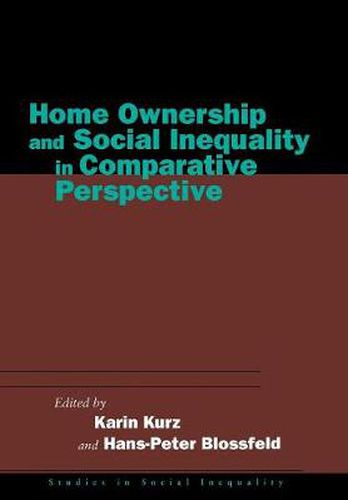Readings Newsletter
Become a Readings Member to make your shopping experience even easier.
Sign in or sign up for free!
You’re not far away from qualifying for FREE standard shipping within Australia
You’ve qualified for FREE standard shipping within Australia
The cart is loading…






Although a strong indicator of social status, home ownership has rarely emerged as a topic in social inequality research. This book compares twelve countries - the United States, Germany, Belgium, France, the Netherlands, Denmark, Norway, Italy, Spain, the United Kingdom, Ireland, and Israel - to determine the interdependence of social inequality and homeownership attainment over the life course. Examining countries that are similar with respect to socio-economic development, but different in regard to their housing policies, the authors show that housing policies matter and are largely consistent with a country’s general approach in the provision of welfare. This book presents a valuable contribution to the social stratification literature, which traditionally has neglected the dimension of home ownership. It goes beyond most housing studies by adopting a life course framework and longitudinal approach. The empirical findings provide evidence that in all countries under study - even those of the social democratic welfare regime type - labor market position matters in one’s chances to become a homeowner.
$9.00 standard shipping within Australia
FREE standard shipping within Australia for orders over $100.00
Express & International shipping calculated at checkout
Although a strong indicator of social status, home ownership has rarely emerged as a topic in social inequality research. This book compares twelve countries - the United States, Germany, Belgium, France, the Netherlands, Denmark, Norway, Italy, Spain, the United Kingdom, Ireland, and Israel - to determine the interdependence of social inequality and homeownership attainment over the life course. Examining countries that are similar with respect to socio-economic development, but different in regard to their housing policies, the authors show that housing policies matter and are largely consistent with a country’s general approach in the provision of welfare. This book presents a valuable contribution to the social stratification literature, which traditionally has neglected the dimension of home ownership. It goes beyond most housing studies by adopting a life course framework and longitudinal approach. The empirical findings provide evidence that in all countries under study - even those of the social democratic welfare regime type - labor market position matters in one’s chances to become a homeowner.